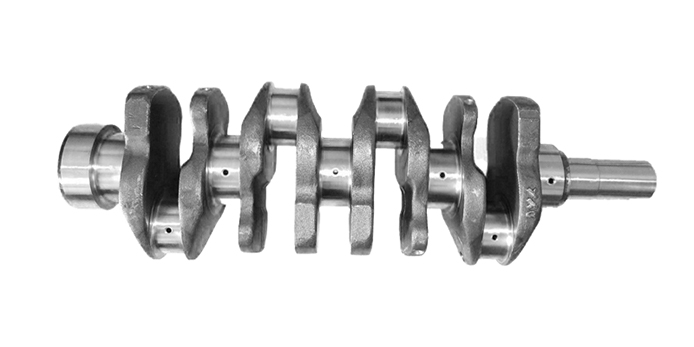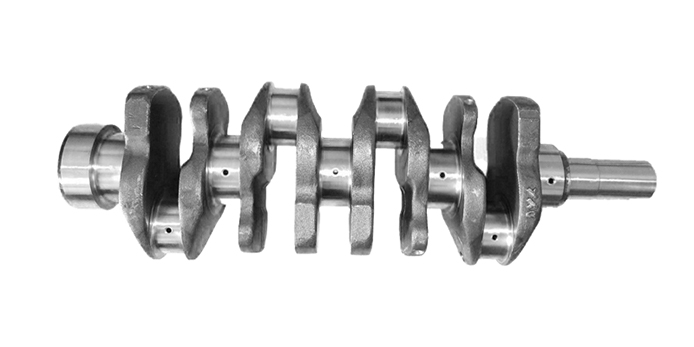- Contact Innally, Let you purchase forgings in China more favorable prices, products more assured!
- Hotline:+(86)15038323776 Email:innally@innally.com
What is locomotive crankshaft forging?
- Category: Locomotive forging, Steel forgings
- |
- Date: 16/08/2023
Locomotive crankshaft forging is one of the key components in locomotive engine, it is the main shaft that connects the connecting rod and drives the movement of the locomotive piston, and assumes the important function of transforming the linear movement of the connecting rod into the rotating movement. Locomotive crankshaft forgings are manufactured by special forging process, with high strength, high precision and good durability, and provide stable power output for locomotive engines.
- Can be customized according to the specific model
Product Details
Locomotive crankshaft forging is one of the key components in locomotive engine, it is the main shaft that connects the connecting rod and drives the movement of the locomotive piston, and assumes the important function of transforming the linear movement of the connecting rod into the rotating movement. Locomotive crankshaft forgings are manufactured by special forging process, with high strength, high precision and good durability, and provide stable power output for locomotive engines.
First, locomotive crankshaft forgings have high strength and high toughness. In the process of locomotive operation, the crankshaft is subjected to continuous rotating load and impact force, and needs to be able to withstand extremely high stress and deformation. Through forging process, the crankshaft material can be reshaped and homogenized, so that its grain structure can be improved, so as to improve the strength and toughness of the crankshaft. This allows the crankshaft to withstand the enormous forces from the connecting rod and piston and maintain stable operation.

Secondly, locomotive crankshaft forgings have excellent accuracy and dimensional control. The operation of the engine requires very strict control over the geometry and size of the crankshaft. Any small error can lead to a poor fit between the crankshaft and other key components, which in turn affects the operation and efficiency of the machine. Through the forging process, the precise control of the shape and size of the crankshaft can be achieved to ensure the precise fit of the crankshaft with the connecting rod, piston and bearing, so as to ensure the normal operation and efficient work of the engine.
In addition, locomotive crankshaft forgings also have good wear resistance and fatigue resistance. Since the crankshaft is in a state of continuous rotation, its surface needs to have high hardness and wear resistance to resist wear caused by factors such as poor lubrication. At the same time, the crankshaft should also be able to withstand the reciprocating load brought about by long-term high-speed rotation, so it needs to have good fatigue resistance. Through the forging process and the selection of materials, the crankshaft surface can be strengthened to a certain extent, and its anti-wear and anti-fatigue ability can be improved.
Locomotive crankshaft forging plays an important role in locomotive engine. It provides power output to the locomotive by connecting connecting rod and piston, converting the piston movement into the rotating power of the engine. At the same time, the manufacturing process of the crankshaft needs to be strictly controlled to ensure the quality and performance of the crankshaft. Only the locomotive crankshaft forgings with high strength, high precision and good durability can ensure the stable operation and efficient work of the locomotive engine.
To sum up, locomotive crankshaft forging is one of the indispensable key components in locomotive engine. It is manufactured by forging process, has high strength, high precision and good durability, and provides reliable power output for locomotive engines.
ayu
INNALLY mainly provides you with various types of cast and forged parts products. Welcome your inquiries! innally@innally.com
Related Products
Search
Forging center
- Steel forgings
- Aluminium alloy forging
- Titanium alloy forging
- Stainless steel forging
- Copper forging
- Automotive forgings
- Locomotive forging
- Bicycle forgings
- Motorcycle forging
- Rigging and fasteners
- Bearing forging
- Electric power fittings
- Marine forging
- Mechanical forgings for metalworking
- Mining machinery forgings
- Marine engineering forgings
- Construction machinery forgings
Popular product

© 2025. All Rights Reserved.







